Lipoabdominoplasty: What We Have Implemented and What We Have Modified over 26 Years
- PMID: 36845863
- PMCID: PMC9945111
- DOI: 10.1097/GOX.0000000000004805
Lipoabdominoplasty: What We Have Implemented and What We Have Modified over 26 Years
Abstract
Lipoabdominoplasty is one of the most commonly performed procedures in body-contouring surgery. We present a retrospective study of our 26 years of experience to improve the results and assure the greatest possible safety in lipoabdominoplasty. We include all of our female patients who underwent lipoabdominoplasty performed from July 1996 to June 2022, dividing the patients into two groups: group I underwent circumferential liposuction avoiding abdominal flap liposuction for the first 7 years, and group II underwent circumferential liposuction including abdominal flap liposuction for the subsequent 19 years, pointing out the differences in the processes, results, and complications of both groups. Over a period of 26 years, 973 female patients underwent lipoabdominoplasty: 310 in group I and 663 in group II. Ages were very similar; however, weight, BMI, amount of liposuction material, and weight of the abdominal flap removed were higher in group I. Twenty percent of patients in group I were obese compared to 7% in group II. The average amount of liposuction in group I was 4990 mL compared to 3373 mL in group II and 1120 g of abdominal flap in group I versus 676 g in group II. Minor and major complications were 11.6% and 1.2% in group I versus 9.2% and 0.6% in group II, respectively. In our more than 26 years of performing lipoabdominoplasty, we have maintained most of our initial procedures. These processes have allowed us to perform surgery safely and effectively with a low morbidity rate.
Copyright © 2023 The Authors. Published by Wolters Kluwer Health, Inc. on behalf of The American Society of Plastic Surgeons.
Conflict of interest statement
Disclosure: The authors have no conflict of interest to declare in relation to the content of this article.
Figures

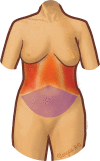


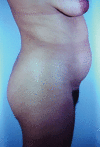


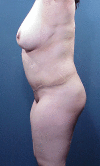

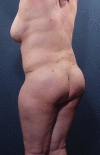
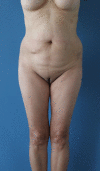





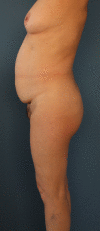


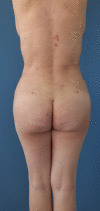
Similar articles
-
TULUA Male High-Definition Abdominoplasty.Plast Reconstr Surg. 2022 Jan 1;149(1):96-104. doi: 10.1097/PRS.0000000000008680. Plast Reconstr Surg. 2022. PMID: 34936608
-
Lipoabdominoplasty with Anatomic Definition: An Evolution on Saldanha's Technique.Clin Plast Surg. 2020 Jul;47(3):335-349. doi: 10.1016/j.cps.2020.03.004. Epub 2020 Apr 28. Clin Plast Surg. 2020. PMID: 32448471 Review.
-
Safety of a Modified Lipoabdominoplasty Technique for Donor-Site Closure in Abdominal-Based Free Flap Breast Reconstruction.Aesthetic Plast Surg. 2021 Aug;45(4):1431-1440. doi: 10.1007/s00266-020-02117-y. Epub 2021 Jan 22. Aesthetic Plast Surg. 2021. PMID: 33483783
-
A case for the safety and efficacy of lipoabdominoplasty: a single surgeon retrospective review of 173 consecutive cases.Aesthet Surg J. 2010 Sep;30(5):702-13. doi: 10.1177/1090820X10381879. Aesthet Surg J. 2010. PMID: 20884899
-
Safety of Lipoabdominoplasty Versus Abdominoplasty: A Systematic Review and Meta-analysis.Aesthetic Plast Surg. 2019 Feb;43(1):167-174. doi: 10.1007/s00266-018-1270-3. Epub 2018 Dec 3. Aesthetic Plast Surg. 2019. PMID: 30511162
Cited by
-
Body Contouring as Gender-Affirming Surgery in Transgender Patients: A Systematic Review of the Current Literature.J Clin Med. 2024 Jun 16;13(12):3523. doi: 10.3390/jcm13123523. J Clin Med. 2024. PMID: 38930052 Free PMC article. Review.
References
-
- Cárdenas-Camarena L. Aesthetic surgery of the thoracoabdominal area combining abdominoplasty and circumferential lipoplasty: 7 years’ experience. Plast Reconstr Surg. 2005;116:881–890. - PubMed
-
- Cárdenas Camarena L, Laguna Barraza V. Full abdominoplasty with circumferential lipoplasty. Aesthetic Surg J. 2007;27:493–500. - PubMed
-
- Cárdenas-Camarena L. Various surgical techniques for improving body contour. Aesthetic Plast Surg. 2005;29:446–455. - PubMed
-
- Cárdenas-Camarena L, González LE. Large-volume liposuction and extensive abdominoplasty: a feasible alternative for improving body shape. Plast Reconstr Surg. 1998;102:1698–1707. - PubMed
LinkOut - more resources
Full Text Sources
